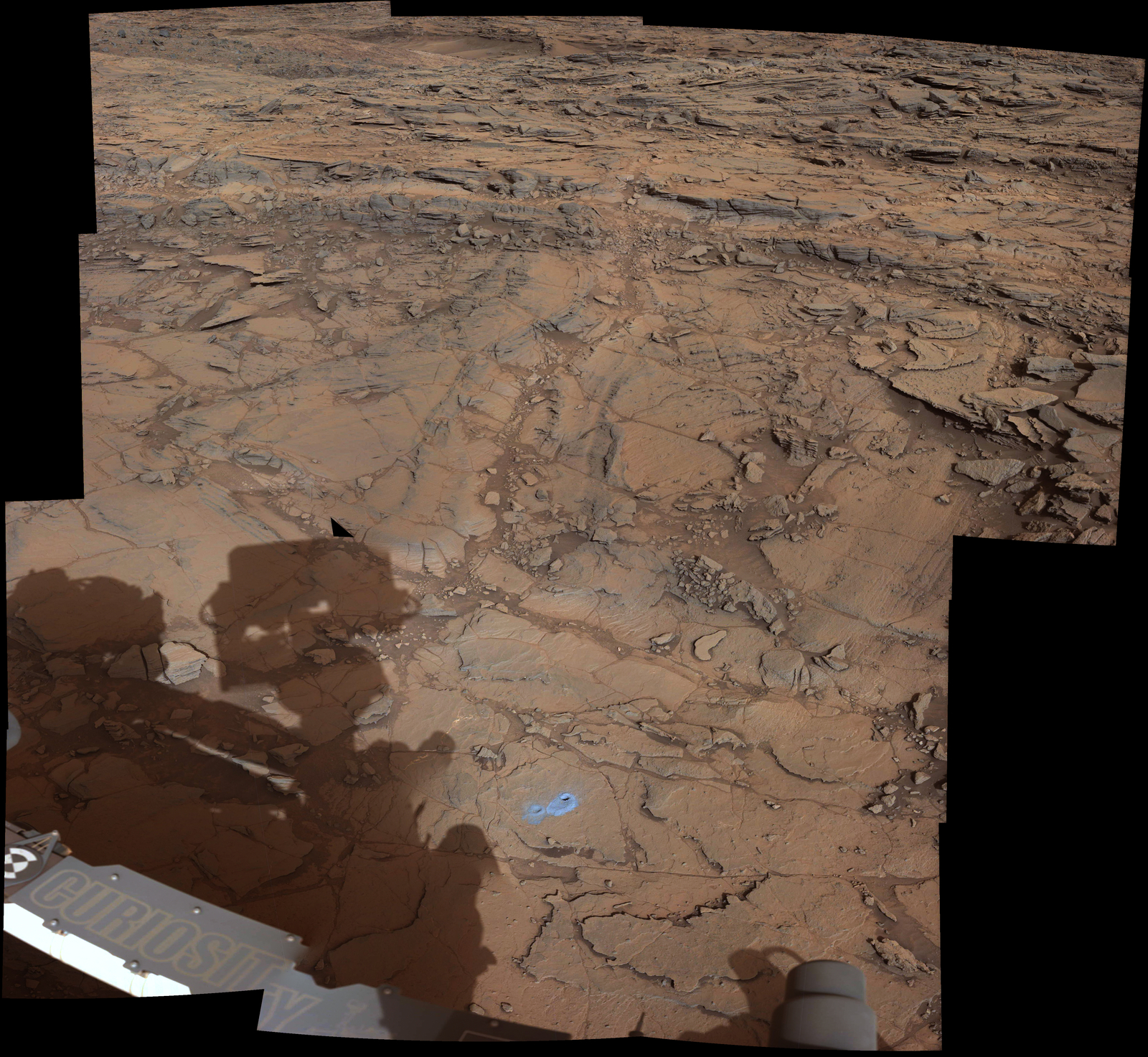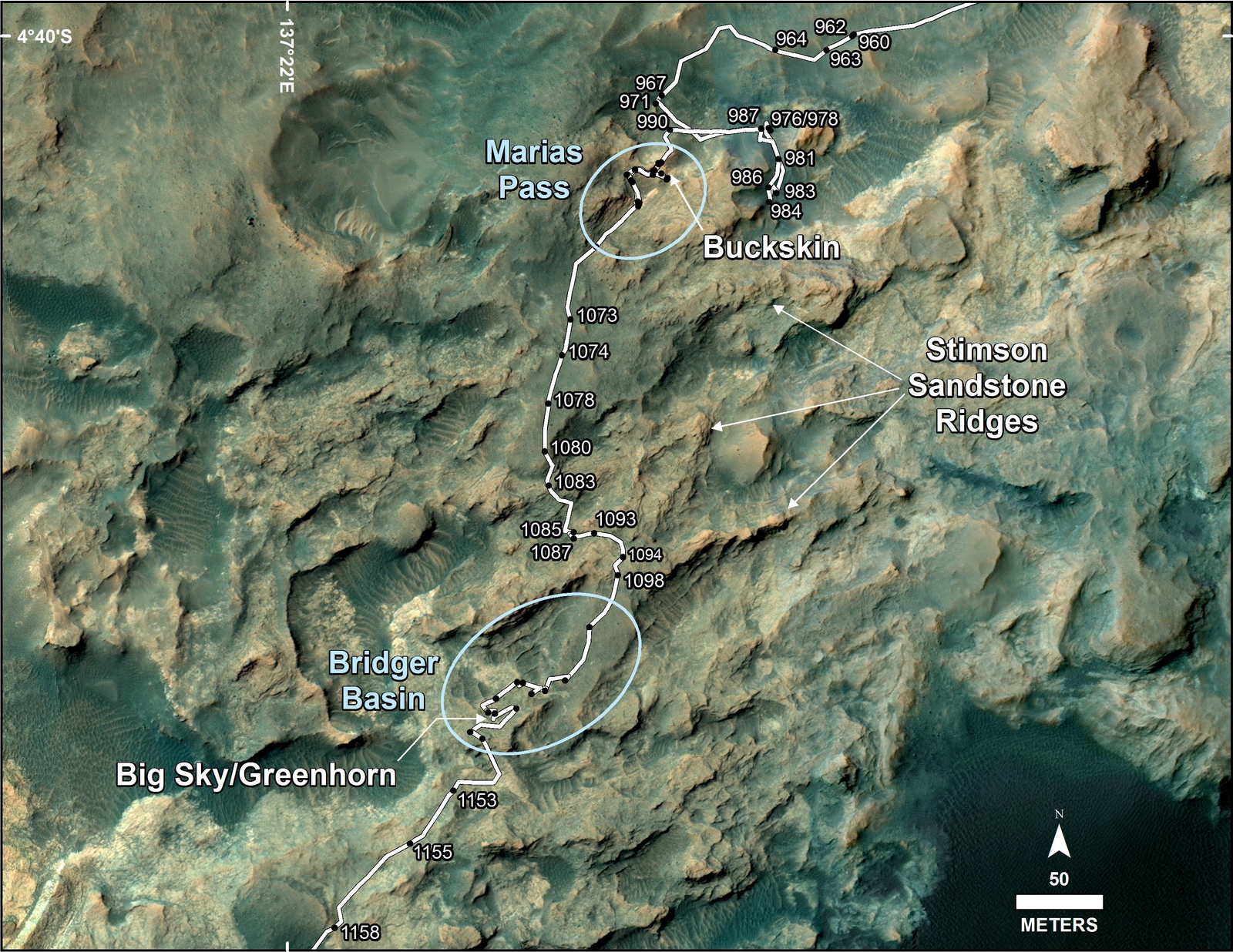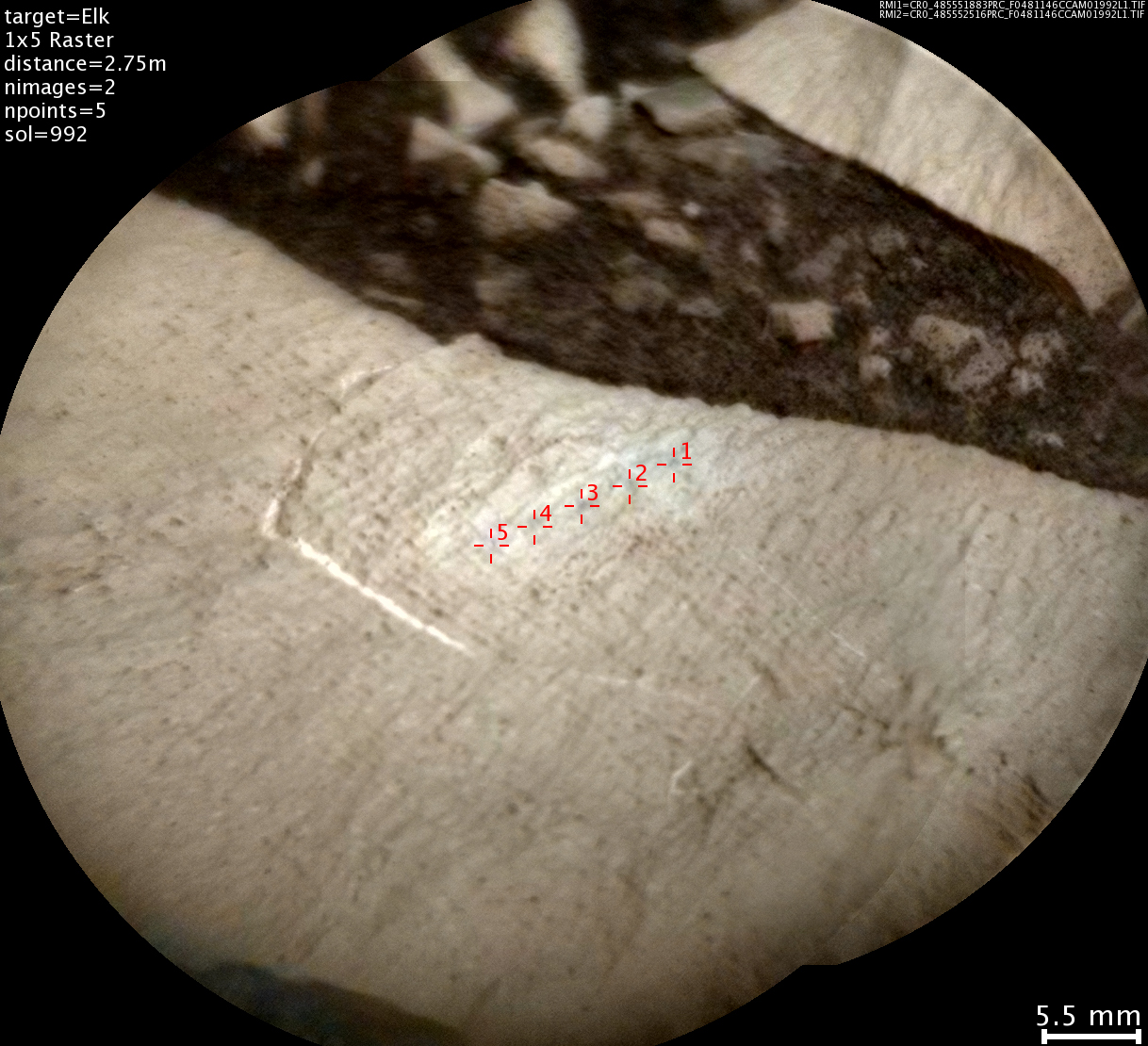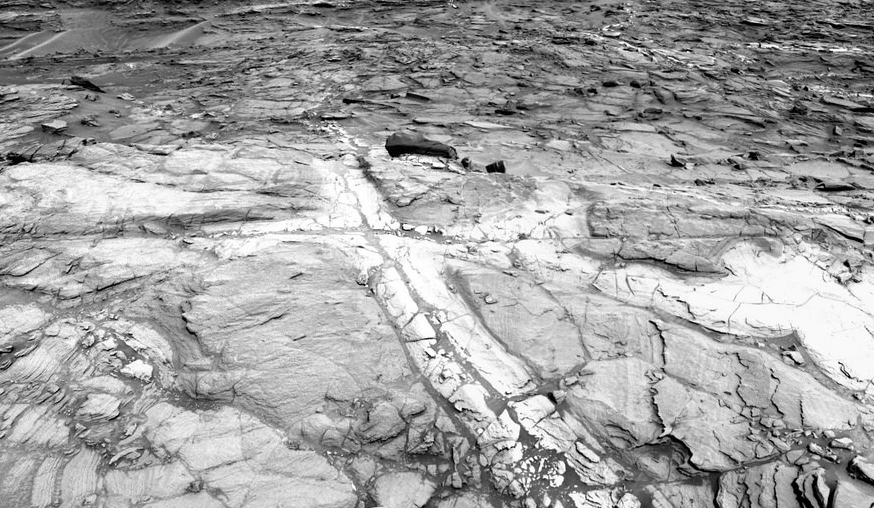NEWS | December 17, 2015
Rocks Rich in Silica Present Puzzles for Mars Rover Team


NASA's Curiosity rover has found much higher concentrations of silica at some sites it has investigated in the past seven months than anywhere else it has visited since landing on Mars 40 months ago. Silica makes up nine-tenths of the composition of some of the rocks. It is a rock-forming chemical combining the elements silicon and oxygen, commonly seen on Earth as quartz, but also in many other minerals.
"These high-silica compositions are a puzzle. You can boost the concentration of silica either by leaching away other ingredients while leaving the silica behind, or by bringing in silica from somewhere else," said Albert Yen, a Curiosity science team member at NASA's Jet Propulsion Laboratory, Pasadena, California. "Either of those processes involve water. If we can determine which happened, we'll learn more about other conditions in those ancient wet environments."
Water that is acidic would tend to carry other ingredients away and leave silica behind. Alkaline or neutral water could bring in dissolved silica that would be deposited from the solution. Apart from presenting a puzzle about the history of the region where Curiosity is working, the recent findings on Mount Sharp have intriguing threads linked to what an earlier NASA rover, Spirit, found halfway around Mars. There, signs of sulfuric acidity were observed, but Curiosity's science team is still considering both scenarios -- and others -- to explain the findings on Mount Sharp.

Curiosity has been studying geological layers of Mount Sharp, going uphill, since 2014, after two years of productive work on the plains surrounding the mountain. The mission delivered evidence in its first year that lakes in the area billions of years ago offered favorable conditions for life, if microbes ever lived on Mars. As Curiosity reaches successively younger layers up Mount Sharp's slopes, the mission is investigating how ancient environmental conditions evolved from lakes, rivers and deltas to the harsh aridity of today's Mars.
Seven months ago, Curiosity approached "Marias Pass," where two geological layers are exposed in contact with each other. The rover's laser-firing instrument for examining compositions from a distance, Chemistry and Camera (ChemCam), detected bountiful silica in some targets the rover passed on its way to the contact zone. The rover's Dynamic Albedo of Neutrons instrument simultaneously detected that the rock composition was unique in this area.

Gathering clues about silica was a major emphasis in rover operations over a span of four months and a distance of about one-third of a mile (half a kilometer).
The investigations included many more readings from ChemCam, plus elemental composition measurements by the Alpha Particle X-ray Spectrometer (APXS) on the rover's arm and mineral identification of rock-powder samples by the Chemistry and Mineralogy (CheMin) instrument inside the rover.
Buckskin was the first of three rocks where drilled samples were collected during that period. The CheMin identification of tridymite prompted the team to look at possible explanations: "We could solve this by determining whether trydymite in the sediment comes from a volcanic source or has another origin," said Liz Rampe, of Aerodyne Industries at NASA's Johnson Space Center, Houston. "A lot of us are in our labs trying to see if there's a way to make tridymite without such a high temperature."
Beyond Marias Pass, ChemCam and APXS found a pattern of high silica in pale zones along fractures in the bedrock, linking the silica enrichment there to alteration by fluids that flowed through the fractures and permeated into bedrock. CheMin analyzed drilled material from a target called "Big Sky" in bedrock away from a fracture and from a fracture-zone target called "Greenhorn." Greenhorn indeed has much more silica, but not any in the form of tridymite. Much of it is in the form of noncrystalline opal, which can form in many types of environments, including soils, sediments, hot spring deposits and acid-leached rocks.

For more about Curiosity, which is examining sand dunes this month, visit:
[[MODULE||News.ShowNewsImages||ParseModule=No&ImageList=7590,7593,7594,7595,7596,7597,7598,7599,7600,7601,7602,7603,7604,7605,7607,7608,7609,7610]]
2015-377
Guy Webster
Jet Propulsion Laboratory, Pasadena, Calif.
818-354-6278
guy.webster@jpl.nasa.gov
Dwayne Brown / Laurie Cantillo
NASA Headquarters, Washington
202-358-1726 / 202-358-1077
dwayne.c.brown@nasa.gov / laura.l.cantillo@nasa.gov


